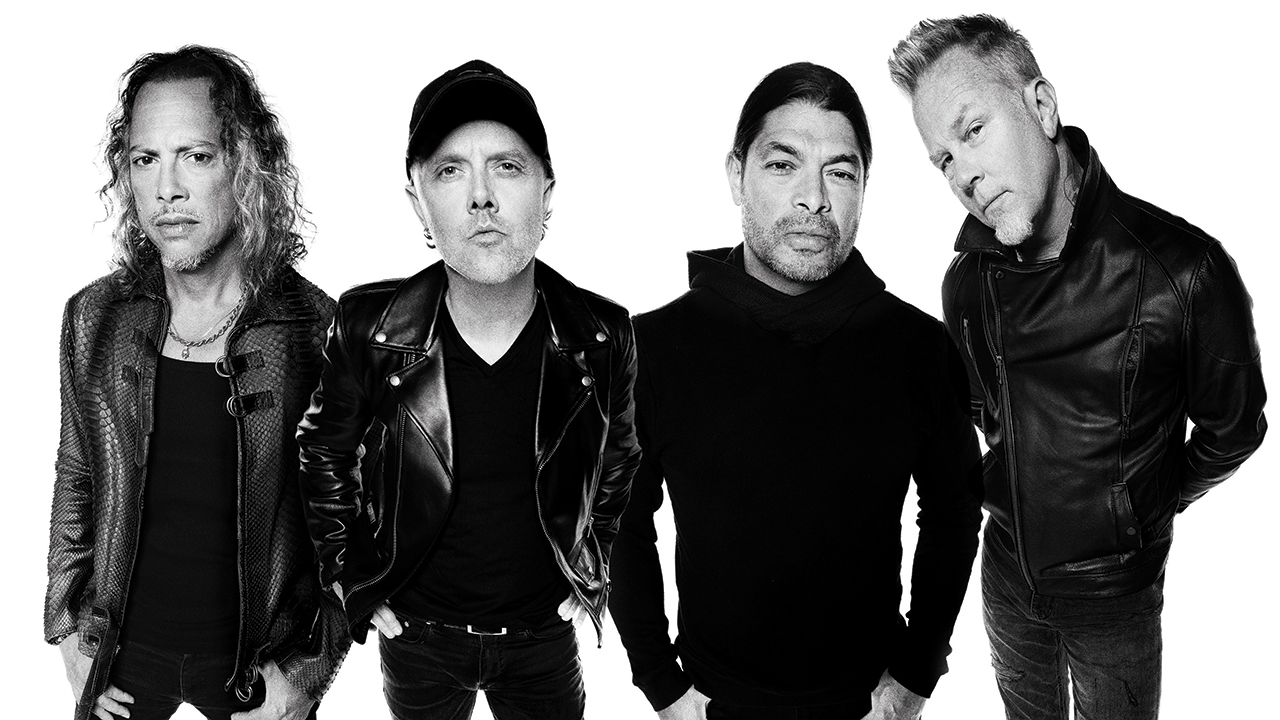How do you cling on to your throne as the world’s biggest hard rock band for more than 25 years? Metallica have had a few wobbles over the decades: legal battles with fans, a few duff albums, bust-ups and fall-outs and ill-advised public therapy sessions. Their harshest critics would argue that in the process they have diluted thrash metal into safe family entertainment, mainstream enough to headline Glastonbury or pack cinemas with glossy IMAX concert films.
And yet, even in 2016 a new Metallica album is still a cultural event in a way few other rock releases are. They may no longer be the loudest, fastest or most abrasive, but these former thrash metal overlords remain the gold standard of how unashamedly heavy music can still compete with the biggest blockbuster names in pop and rap. Of course, they will never again be the fiercely innovative, game-changing underdogs they were in the 80s. But if we can forgive these former punky outsiders for growing up into middle-aged squillionaire businessmen, then their musical journey is still worth exploring, their none-more-black aesthetic still potent.
Eight years have elapsed since the multi-platinum Death Magnetic, the longest gap between studio albums in Metallica’s career. Initially they planned to work on Hardwired…To Self-Destruct with the same producer, the legendary Rick Rubin, but during the project’s long gestation studio engineer Greg Fidelman took over co-production with Lars Ulrich and James Hetfield.
First impression: fantastic sleeve. Brooklyn-based high-art photography duo Herring & Herring have transformed Metallica into garish, multi-coloured, face-twisting demons, like living Francis Bacon paintings. It’s arguably their best album cover ever. Inside, however, the results are more mixed. Where Rubin pushed the band to revisit their hyper-maximalist 80s thrash roots, with mostly fruitful results, here it’s a more uneven mix. Hardwired is an 88-minute double album that spends too long in Metallica’s latter-day comfort zone of mid-tempo power-grind and cartoonishly macabre lyrics, and much of it feels conservative and uninspired. But all is not lost; there is plenty to savour too.
The two lead-off singles are deceptively compact belters. Hardwired, the last song written and recorded for the album, is an exhilarating three-minute blast of machine-gun punk-metal, all squealing tyres, screeching hand-brake turns and percussive staccato chants: ‘We’re so fucked! Shit outta luck!’ Yay! Moth Into Flame is another exercise in pummelling brevity, its hurtling centrifugal energy nicely offset against chiming minor-key chords. Both are punchy, choppy and relatively poppy by modern Metallica standards.
But as the album unfolds it expands into six, seven and eight-minute epics. The apex of this billowing gigantism is Halo On Fire, a brooding power ballad framed by a widescreen vista that takes in mountainous crunch chords, fizzing geysers of super-fast guitar squiggle and towering volcanoes of fiery, Wagnerian excess; imagine a Game Of Thrones box set crammed into eight minutes of molten melodrama. And Am I Savage? is a gloriously ugly, scouring, relentless skull fucker with a lyric about bestial transformation and mighty Old Testament doom chords worthy of Black Sabbath. Zombie romance lasts forever in Now That We’re Dead, a louche, leering, lightly gothic love song in which Hetfield serenades his corpse bride: ‘Now that we’re dead, my dear, we can be together.’ There are pleasing echoes of Kurt Cobain’s mordant wit here.
- Watch this man play every Metallica song in just under four minutes
- Metallica's epic journey from Death Magnetic to Hardwired... To Self-Destruct
- Metallica Quiz
- The Top 10 Greatest Metallica Riffs Ever
Indeed more of his sardonic spirit would have been welcome elsewhere on the album’s more ponderous monochrome numbers. Because, alas, Hardwired falls short of Death Magnetic in its paltry haul of unashamedly excessive, bombastic, super-sized speed-metal anthems. Too many songs just chug along in routine riff-crunching mode, barely building on their initial blueprint. Tracks such as Dream No More, an invocation of Cthulu, cult horror author HP Lovecraft’s ancient octopus-like deity – a recurring motif in previous Metallica songs. While Hetfield’s lyric is rich in imagery of black seas, torture and damnation, the sluggish musical backdrop simply does not rise to the challenge.
The second disc is a little too reliant on these more generic numbers. Confusion is seven indifferent minutes of scowling, growling gloom-core. Murder One pays tribute to Lemmy with its long litany of lyric quotes: ‘born to lose’, ‘iron horse’, ‘aces wild’ etc, but once again this feels like a missed opportunity. Considering Metallica’s deep musical debt to Motörhead, the song should have been a rousing future classic, not a run-of-the-mill sludge-metal piledriver.
The album ends on a high with Spit Out The Bone, a monumental Gormenghast of dystopian thrash nihilism with a lyric celebrating humanity’s extinction at the hands of genocidal machines. ‘Utopian solution!’ Hetfield barks, ‘finally cure the Earth of Man!’ Exhilaratingly noisy and steeped in gleefully negative punker attitude, it’s a welcome reminder of Metallica at their uncompromising best. Unshackled from orthodox notions of good taste, they can still make a gloriously hideous racket.
A bumpy ride overall, but with enough peaks to excuse the more pedestrian sections. Heavy rock’s longest-running game of thrones is not over yet.
The 1000 days that changed Metallica
Every song on Metallica's Master Of Puppets ranked from worst to best

